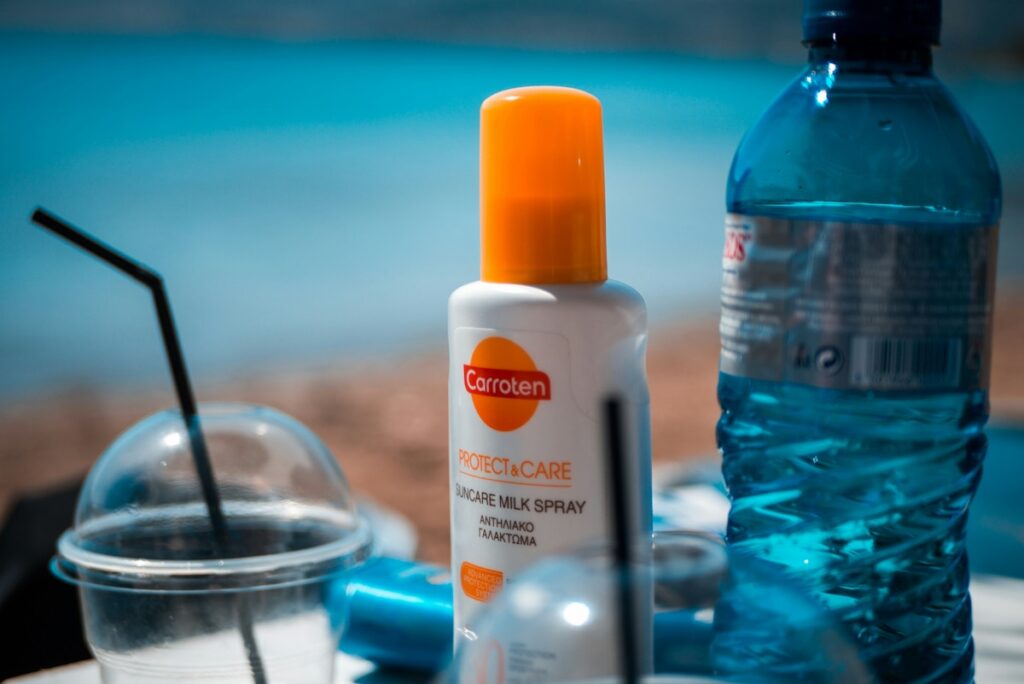
Today’s beach outings differ significantly from those of previous generations. With climate change intensifying summer heat waves and the ozone layer not yet fully restored, the need for effective sun protection has never been greater. Sunscreens, while offering essential protection against sunburn and skin cancer, are increasingly scrutinized for their environmental impact. Experts warn that the chemicals in sunscreens are a growing source of marine pollution.
Much of the concern centers around ultraviolet (UV) filters, which are the active ingredients in sunscreens. These filters come in two forms: organic, which absorb solar radiation, and inorganic, which reflect it using zinc oxide and titanium oxide. Annually, an estimated 6,000 to 14,000 metric tons of UV filtering chemicals are released into coastal waters, particularly affecting coral reefs. This has led to bans on certain chemicals to protect these ecosystems.
The Environmental Impact of Sunscreens
Experts emphasize that the detrimental effects of sunscreen chemicals extend beyond coral reefs. A 2025 study by Plymouth Marine Laboratory in the UK highlights how these chemicals impact various marine organisms at the molecular and cellular levels. UV filters have been linked to enzyme growth disruption, endocrine issues, and reproductive problems, affecting not only coral but also seagrass, fish, and other marine life.
“There are multiple axes of toxicities associated with the petrochemical sunscreens, ranging from reproductive development toxicities to neurotoxicity to increased risk for mutagenicity and carcinogenicity and then endocrine disruption.” – Craig Downs, Executive Director, Haereticus Environmental Laboratory
The researchers call for urgent investigations into these impacts. Anneliese Hodge, a Ph.D. student and lead author of the study, stresses the need to identify less harmful alternatives. “If there’s a risk that these chemicals can harm coral and other marine life, we need to establish what they are,” she says.
Human Health Concerns and Regulatory Challenges
While the environmental impacts are clearer, concerns about human health effects of sunscreen chemicals are still emerging. Preliminary findings suggest some chemicals may enter the bloodstream, but long-term effects remain uncertain. This has fueled an “anti-sunscreen” movement, which experts caution against, emphasizing the need for balanced information.
UV filters are classified as “pseudo-persistent pollutants.” They degrade over time, but not quickly enough to counteract their continuous influx into the environment. These chemicals wash off bodies into the ocean or enter through wastewater, which many treatment facilities cannot adequately filter.
Lenka McGachy, professor of environmental chemistry at the University of Chemistry and Technology in Prague, notes that UV filters are found globally, even in remote areas like Antarctica. Their ubiquity makes them a common pollutant, affecting diverse marine species.
Seeking Solutions and Sustainable Alternatives
Experts advocate for stricter regulation of sunscreen marketing. Many products labeled as “reef-safe” lack evidence to support their claims, often amounting to greenwashing. Pedro Echeveste De Miguel, a marine microbial ecologist, points out that even these products can still be toxic.
There is also a need to reassess assumptions about inorganic mineral-based sunscreens. Recent studies indicate that some “coral-friendly” mineral sunscreens may harm corals more than those with organic UV filters. Johanna Leonhardt, director of operations at Soneva Conservation & Sustainability, underscores the importance of standardised testing for both individual ingredients and full formulations.
“This shows why credible, standardised testing is urgently needed.” – Johanna Leonhardt
Despite the environmental impacts, misinformation about sunscreens persists. Social media has fueled unfounded claims about their health risks. Experts like Greg Kearns, associate dean for research at Texas Christian University, emphasize the need for more research to understand potential health impacts.
Balancing Protection and Environmental Responsibility
David Andrews, acting chief science officer at the Environmental Working Group, advises consumers to educate themselves about sunscreen ingredients. He suggests using mineral-based sunscreens as a safer option but stresses that sun protection should also involve traditional methods like wearing protective clothing and seeking shade.
Craig Downs calls for innovation in sunscreen formulation, advocating for active ingredients that are safe for both humans and the environment. He highlights the potential of “green chemistry” to develop non-toxic, biodegradable ingredients.
“If you want to make sunscreen safe, then you need an active ingredient that can be [used] at high doses, doesn’t absorb systemically into the skin and doesn’t cause toxicity.” – Craig Downs
Ultimately, experts agree that regulatory bodies must drive change by setting stricter standards for sunscreen safety and environmental impact. This includes exploring new formulations and reducing reliance on harmful chemicals.
As the industry moves towards adding sun protection factor (SPF) boosters to reduce UV filter use, caution is advised. Anneliese Hodge warns that shifting to new chemicals without thorough testing could create new environmental challenges.
“We really need more evidence and more research to fully know exactly what we need to be switching to,” she says. “And we need to find that healthy balance between providing sufficient sun protection whilst also ensuring that our sunscreen ingredients are environmentally conscious.”







